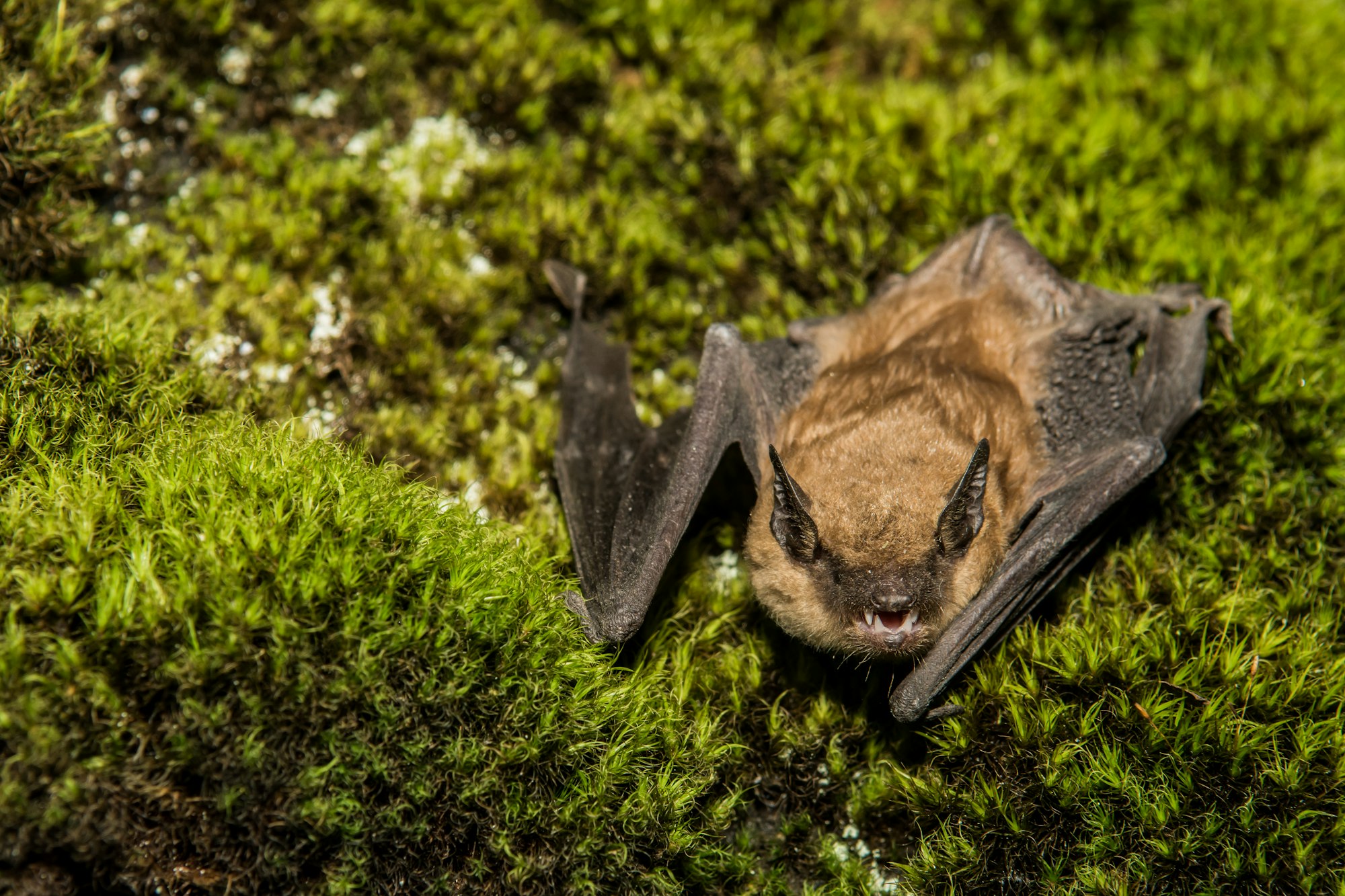Bats

Twenty-five species of bats occur in California. Most cause no problems, are nocturnal, and rarely seen. However, some bats use houses and other structures for roosts or nests. This can lead to an accumulation of droppings, and sometimes the possibility of rabies transmission to humans.
A single bat found flying in a home or other building can often be encouraged to fly back out by opening all doors and windows to the outside and closing off entrances to other rooms. Bats that are repeatedly entering or nesting within a building need to be excluded. This work should be done by a wildlife professional who is experienced with safe handling of bats and is familiar with regulations and practices that prevent bats from entrapment and recognize their seasonal life cycle.
Bats and Rabies
Rabies is a viral disease that affects mammals, including wildlife, pets, and humans. It is most commonly transmitted through the bite of an infected animal. Rabies is rare but present in animals in San Mateo County. According to the California Department of Public Health, in San Mateo County there was 1 rabid bat reported in 2023 (most recent final data).
- It is important never to handle a bat, especially if it appears ill or is out during the day.
- Bats that appear sick, injured or dead should be reported to the Peninsula Humane Society at 650-340-7022.
- These bats can be tested by the County Health department for rabies.
- Anyone who has been in contact with a bat or finds a bat in their room upon awakening should seek medical care for rabies shots because of the possibility of being unknowingly bitten.
Although rabies infections in humans are very rare, they are almost always fatal if not quickly identified and treated. Once symptoms appear, it is too late. To date, only two people worldwide have been documented to have survived clinical rabies.
If you believe you have been in contact with an animal infected with rabies, please consult a health professional immediately.
If you have been in contact with a bat, or have awoken to find a bat in the room with you, please consult a health professional immediately. It is possible to contract rabies from a bat without realizing you have been bitten or scratched.
People who have been exposed to rabies may need a rabies vaccine. In the United States, PEP consists of a regimen of one dose of immune globulin and four doses of rabies vaccine over a 14-day period. Rabies immune globulin and the first dose of rabies vaccine should be given by your health care provider as soon as possible after exposure. Current vaccines are relatively painless and are given in your arm like a flu or tetanus vaccine; rabies vaccines are not given in the stomach.
For more about rabies, visit the CDC’s rabies page or the CDPH's rabies page.
For more about animal bites and rabies prevention in San Mateo County, visit the SMC Health page.
Excluding Bats from Your Home
Bats are a natural part of our ecosystem. In the Bay Area, we have 16 species of native bats, most of which are rarely seen and do not bother or hurt people. However, bats and other mammals can transmit diseases or cause property damage when they enter structures.
Bats leave their roost every night to feed. The best way to remove bats from a structure is to wait until they exit on their own, then prevent them from getting back in. This is called ‘exclusion’, and should never be done during the summer months when bats are raising their young.
- Locate where bats are entering and exiting the structure.
- Install a piece of window screen over the hole. Leave it open at the bottom so bats can find their way out, but secure the other three sides to prevent them getting in.
- If there are other entrances to your structure, you MUST close them first to prevent bats from reentering.
- Leave the screen up for about a week, or until you are sure all bats are gone. Trapping bats inside may result in them entering other areas of the home as they look for an exit.
- Once all bats are gone, you can remove the screen and permanently close the entrance.
Bats and other wildlife are a natural part of our environment. They are protected by both state and federal laws. In California, property owners may legally remove bats from structures. It is illegal to capture or kill bats for any other reason without a permit from the California Department of Fish and Wildlife. If you choose to hire a professional to remove bats from your home or other structure, ensure that they are licensed and comply with applicable laws.
Page last reviewed: September 23, 2025

